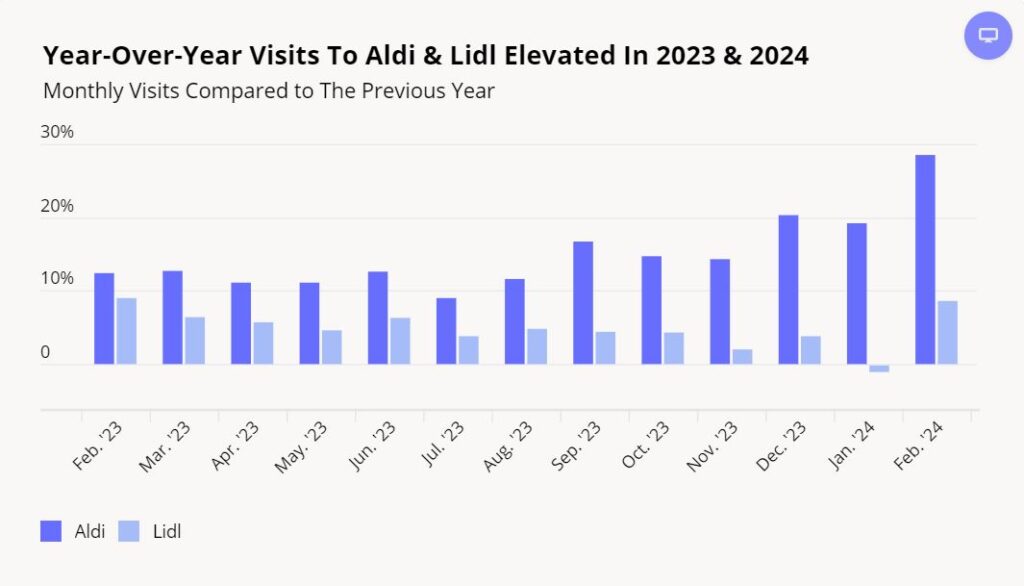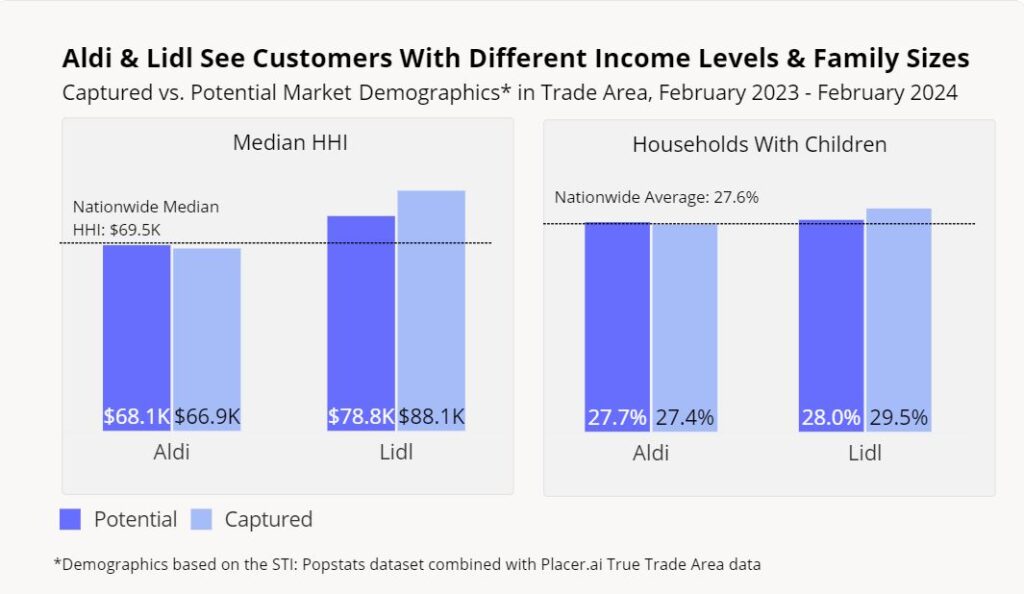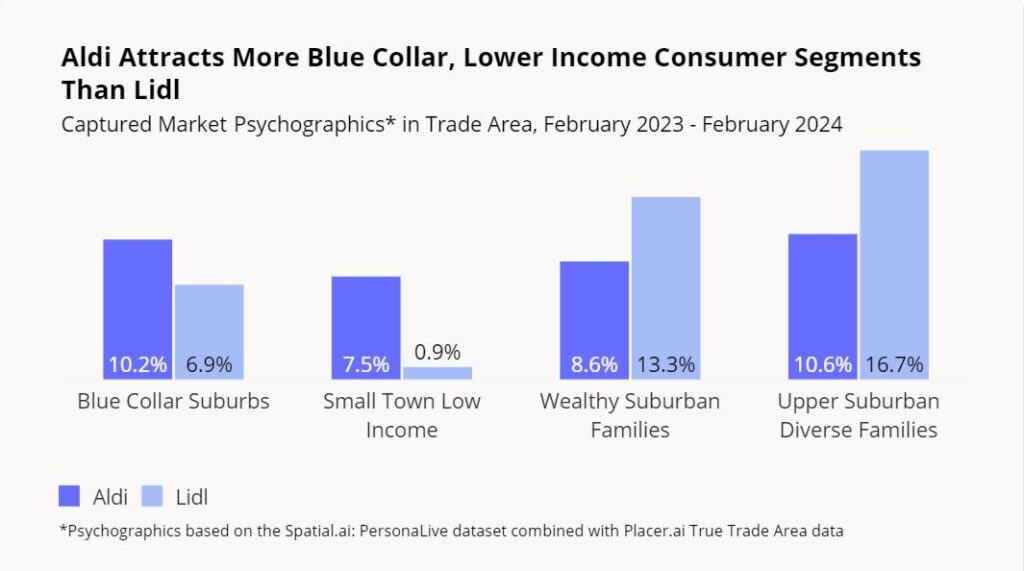This is from the Placer.ai blog by Bracha Arnold posted on April 2, 2024 (republished with permission from Placer.ai):
One of the major stories of 2023 was the rise in food prices, with costs up roughly 25% since 2020 – and the increasing costs of food and other goods have helped discount grocers thrive.
We checked back in with two grocery chains known for their bargain prices and private labels – Aldi BB #:116756 and Lidl BB #:338746 – to see how they’re doing.
Key Takeaways:
- Visit numbers to Aldi and Lidl continue to grow year-over-year.
- Despite Aldi and Lidl’s similar merchandising strategies, the two chains serve different audiences.
- Lidl’s visitors tend to come from higher-income areas with larger household sizes compared to Aldi.
Low-Cost Leaders
Aldi offers prices that rival those of discount grocers, making it a major player in the discount grocery segment. And these attractive prices have helped the company see significant visit growth over the past few years. Year-over-year (YoY) monthly visits to Aldi were up throughout 2023 and into 2024, with some of the growth due to the chain’s aggressive expansion. And the company plans to grow even further – Aldi has announced plans to open another 800 stores over the next few years.
Lidl – another German-based grocer – opened its first location in Virginia in 2017. The chain currently has around 170 locations in the country, primarily on the East Coast, and is also expanding – albeit at a slower pace. Between February 2023 and February 2024, YoY visits to Lidl were up almost every month with only a slight dip in January 2024 – perhaps due to the unseasonal cold – a promising sign for the discount grocer as more consumers than ever choose low-cost food options.


Similar Value, Different Visitors
Although both Lidl and Aldi are German-owned discount grocers, examining the demographics for the two brands’ trade areas nationwide sheds light on the differences between the two chain’s consumer bases.
Analyzing the trade area median HHI reveals that Lidl attracts a higher-income clientele than Aldi: The median household income (HHI) in Aldi’s trade area was slightly lower than the the nationwide median, with the median HHI in the chain’s captured market even lower than the median HHI in its potential market. This indicates that Aldi locates its stores in areas that are accessible to the average consumer and succeeds in attracting also the slightly lower income segments within its potential trade area.
Meanwhile, Lidl’s potential market median HHI stood at $78.8K/year in 2023, and the median HHI in its captured market was even higher – $88.1K/year – indicating that Lidl stores are located in more affluent areas, and that the company caters to the wealthier households within those neighborhoods.
The share of households with children in Aldi’s potential and captured market was also almost identical to the nationwide average – indicating once again Aldi’s success in reaching the average U.S. grocery shopper. Lidl, on the other hand, saw more households with children in both its captured and potential markets, with the share of households with children in its captured market around two percentage points higher than the share of households with children nationwide. So while Aldi and Lidl do share some similarities in terms of origins, preference for private label, and pricing, the trade area analysis points to major differences between the two chains’ audiences.


Similar Concepts, Different Customer Bases
Diving into the psychographic data for Aldi and Lidl adds another dimension to the trends revealed by the demographic data. While both brands are popular among suburban audiences – Aldi tends to attract a more blue-collar customer, while Lidl is frequented by a wealthier suburban segment. The share of visitors falling into the “Small Town Low Income” category was 7.5% for Aldi compared to 0.9% for Lidl. Conversely, Lidl saw 16.7% of its visitors falling into the “Upper Suburban Diverse Families” segment, while Aldi had 10.6% of its consumers in that category.
And while Aldi and Lidl have a hold on different suburban segments, the chains’ expansion strategies seem geared to grow each chain’s reach outside the other’s orbit. Lidl has been opening stores in big cities along the East Coast, including New York City’s tony Chelsea neighborhood, perhaps in a bid to reach more of the wealthier customers that favor the brand. Aldi, meanwhile, recently acquired grocery chains Winn-Dixie and Southeast Grocers, brands that typically attract a more price-sensitive consumer. This acquisition will significantly expand Aldi’s presence and will likely appeal to value-oriented shoppers, a segment already receptive to its offerings.


Room For Everyone
The past few years have seen the grocery space adapting to an increasingly value-oriented consumer, and Aldi and Lidl have benefitted from this shift. As inflation cools and both companies expand their footprints, will they continue on their upward trajectory?



